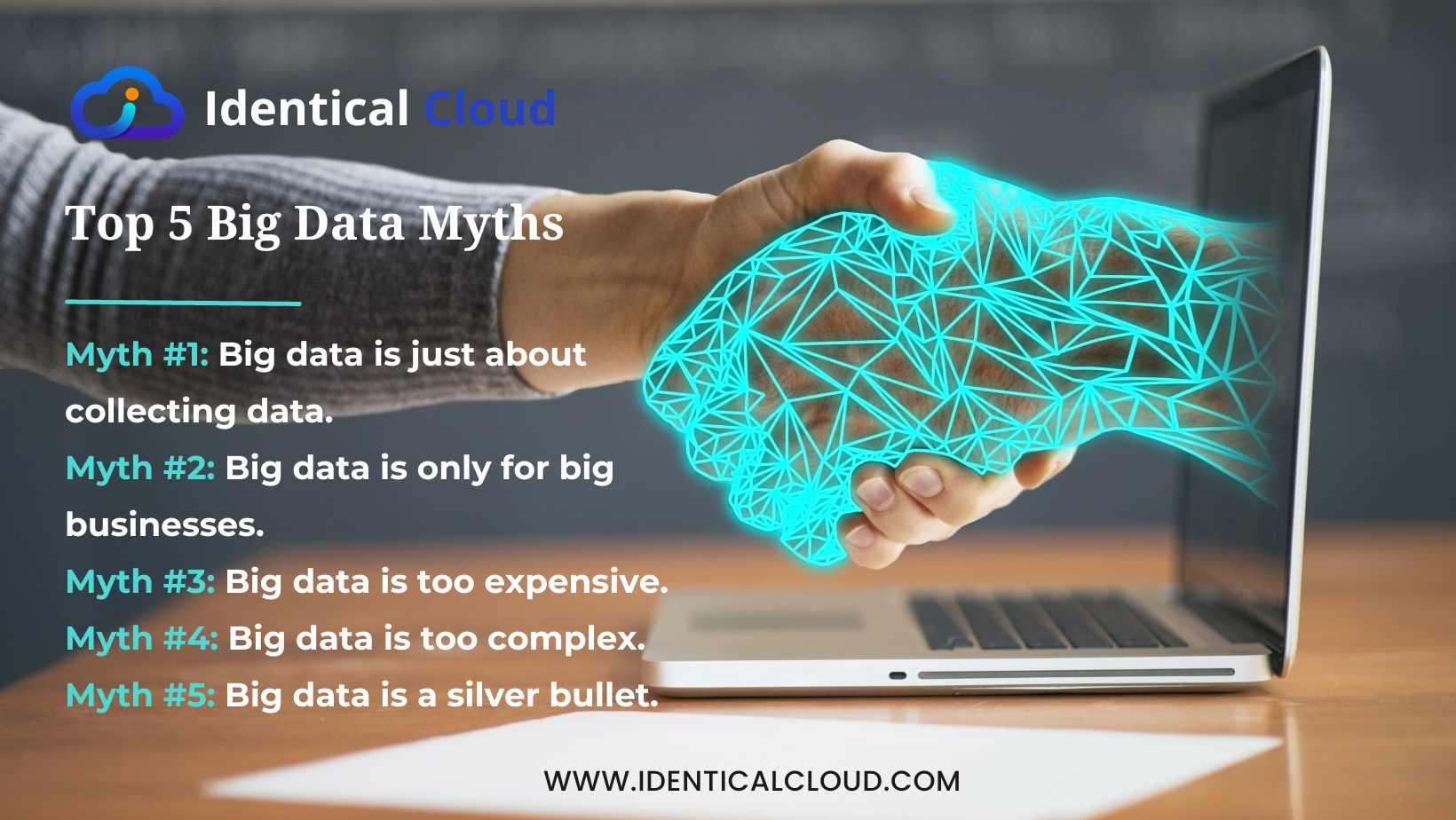
Top 5 Big Data Myths
Top 5 Big Data Myths
Big data is a hot topic these days, and with good reason. The amount of data that is being generated is growing exponentially, and businesses are looking for ways to make sense of it all. However, there are a number of myths about big data that can be confusing and misleading.
What is Big Data?
Big data is a term used to describe large, complex data sets that are difficult to process using traditional data processing methods. Big data is characterized by the three V’s: volume, velocity, and variety.
- Volume: Big data sets are typically very large, often terabytes or petabytes in size.
- Velocity: Big data is often generated in real time or near real time, which means that it needs to be processed quickly.
- Variety: Big data can come in a variety of formats, including structured, semi-structured, and unstructured data.
Big data is becoming increasingly important as more and more data is being generated. This data can be used to gain insights into customer behavior, improve decision-making, and develop new products and services.
Some of the most common uses of big data include:
- Customer analytics: Big data can be used to track customer behavior and preferences, which can help businesses to improve their products and services.
- Fraud detection: Big data can be used to identify patterns of fraudulent activity, which can help businesses to protect themselves from financial losses.
- Risk assessment: Big data can be used to assess risk, such as the risk of a customer defaulting on a loan.
- Product development: Big data can be used to develop new products and services by identifying trends and patterns in customer behavior.
- Marketing: Big data can be used to target marketing campaigns more effectively by understanding the demographics and interests of potential customers.
Big data is a powerful tool that can be used to improve businesses in a variety of ways. However, it is important to note that big data is not a magic bullet. It is still important to have a clear understanding of the business problem that you are trying to solve before you start working with big data.
Here are some examples of big data:
- Transaction data: This is data about customer transactions, such as purchase history, website visits, and app usage.
- Sensor data: This is data from sensors, such as those used in manufacturing, transportation, and healthcare.
- Social media data: This is data from social media platforms, such as Twitter, Facebook, and LinkedIn.
- Log data: This is data from computer systems, such as web server logs and database logs.
Big data is a rapidly growing field, and there are many new technologies and applications being developed all the time. As big data becomes more accessible, it is likely to have an even greater impact on businesses and society as a whole.
List of Top 5 Big Data Myths
In this blog post, we will debunk the top 5 big data myths. We will discuss what big data is, why it is important, and how to avoid falling victim to these myths.
Myth #1: Big data is just about collecting data.
This is one of the most common myths about big data. While collecting data is an important part of big data, it is not the only part. Big data is also about analyzing and interpreting data to gain insights.
Myth #2: Big data is only for big businesses.
This myth is also not true. Big data can be used by businesses of all sizes. In fact, small businesses can often benefit from big data even more than large businesses because they have less data to sift through.
Myth #3: Big data is too expensive.
This myth is also not true. There are a number of affordable big data tools and solutions available. In fact, there are even some free big data tools available.
Myth #4: Big data is too complex.
This myth is also not true. Big data can be complex, but it does not have to be. There are a number of tools and solutions that make big data more accessible to businesses of all sizes.
Myth #5: Big data is a silver bullet.
This myth is the most dangerous of all. Big data is not a silver bullet. It is a tool that can be used to improve business decisions, but it is not a magic wand.
Big data is a powerful resource that has the potential to drive innovation, enhance decision-making, and transform industries. By dispelling these common myths, we gain a more accurate understanding of what big data entails and how it can be effectively harnessed. As organizations embrace big data with a clear perspective, they can navigate the complexities, seize opportunities, and leverage data-driven insights to thrive in the ever-evolving digital landscape.
Big data is a powerful tool, but it is important to understand the myths that surround it. By understanding these myths, you can avoid making the same mistakes that others have made.
